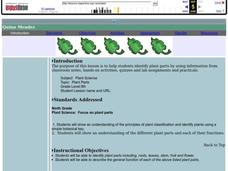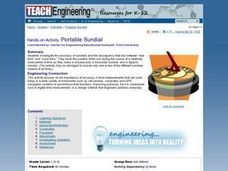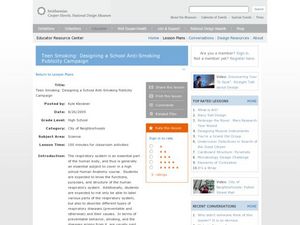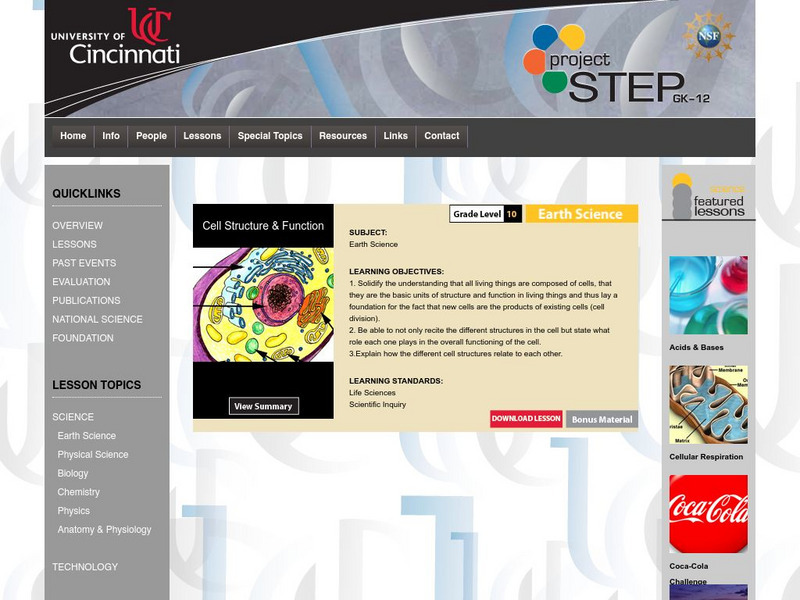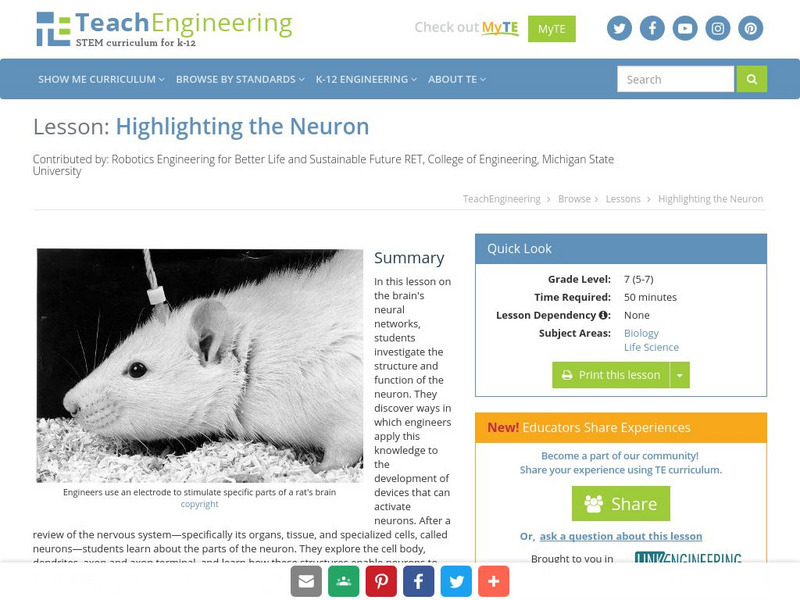Curated OER
From Sunlight to Electric Current
Students explore concept of current in electrical circuits. They examine how energy from the sun can be used to power everyday items, including vehicles.
Curated OER
Tower Investigation and the Egg
Students build three types of towers, engineering them to hold an egg one foot high for 15 seconds. They discover that engineering designs are subject to constraints such as time, money and size specifications. In this activity students...
Curated OER
Plant Parts
Ninth graders identify plant parts by using different classification methods. In this plant instructional activity students observe and draw different types of leaves then classify them according to species.
Curated OER
Unlocking the Endocrine System
Fifth graders use an analogy to the mail delivery system to study the workings of the human endocrine system. They discover the interrelationships between the human body systems while comparing them to engineering communicating with...
Curated OER
Portable Sundial
Students work together to identify the accuracy of sundials. They track the position of the sun and create a shadow plot. They discover the difference between real time and clock time.
Curated OER
Endocrine Excitement!
Students are divided into a group of hormones and a group of receptors. The hormones have to find their matching receptors, and the pair, once matched, perform a given action. This activity helps students examine the specificity of...
Curated OER
Teen Smoking: Designing a School Anti-Smoking Publicity Campaign
Pupils review the human respiratory system and the effects on the human body. In this design instructional activity students brainstorm and create a prototype then present it to the class.
Curated OER
Blend-A-Plant Levels of Organization
Students' identify and analyze the levels of organization and the emergent properties through experimentation. Students' apply the differences in the properties of a plant before and after it has been subjected to a kitchen blender.
Curated OER
Science Processes
Fifth graders observe a dry piece of bread and a damp piece of bread in two separate sealed bags that have been sitting for several days that have been labeled. The observe the mold with a hand lens and record findings in their science...
Curated OER
Technology
Learners recognize descriptions of different types of biotechnology currently being used. They form persuasive arguments for or against that particular type of biotechnology.
Curated OER
GPS Receiver Basics
Young scholars practice using a GPS receiver. They walk in different directions and monitor their progress on maps. They enter specific locations and use information given to them to get them back to their original locations.
Curated OER
Generators: Three Mile Island vs. Hoover Dam
Students are given a history of electricity and its development into the modern age lifeline upon which we so depend. The methods of power generation are introduced, and further discussion of each technology's pros and cons follows. ...
Other
University of Cincinnati: Project Step: Cell Structure and Function
Engaging, interactive lesson focusing on cells being the basic units of structure and function of all living things. Students will be able to explain the different roles of each structure and how they relate to each other.
TeachEngineering
Teach Engineering: Cell Membrane Structure and Function
Young scholars learn about the different structures that comprise cell membranes, fulfilling part of the Research and Revise stages of the legacy cycle. Students view online animations of cell membrane dynamics (links provided). Then...
TeachEngineering
Teach Engineering: Cell Celebration!
Students look at the components of cells and their functions. The lesson focuses on the difference between prokaryotic and eukaryotic cells. Each part of the cell performs a specific function that is vital for the cell's survival....
TeachEngineering
Teach Engineering: Highlighting the Neuron
In this activity on the brain's neural networks, students investigate the structure and function of the neuron. They discover ways in which engineers apply this knowledge to the development of devices that can activate neurons. Includes...
PBS
Pbs Teachers: Scientific American: Never Say Die: How to Make a Nose
Investigate breakthroughs in stem cell research, and explore the structure and function of a DNA molecule. Create a model of a DNA from tagboard.




